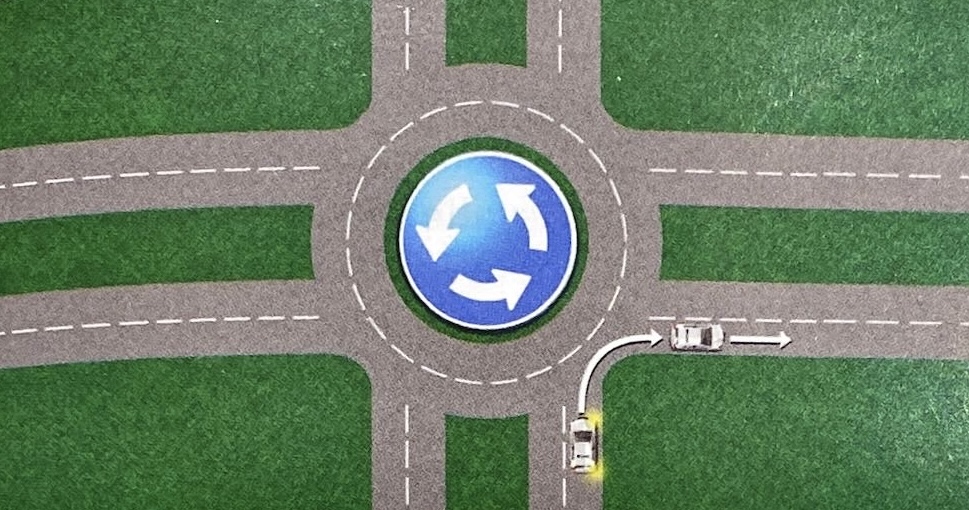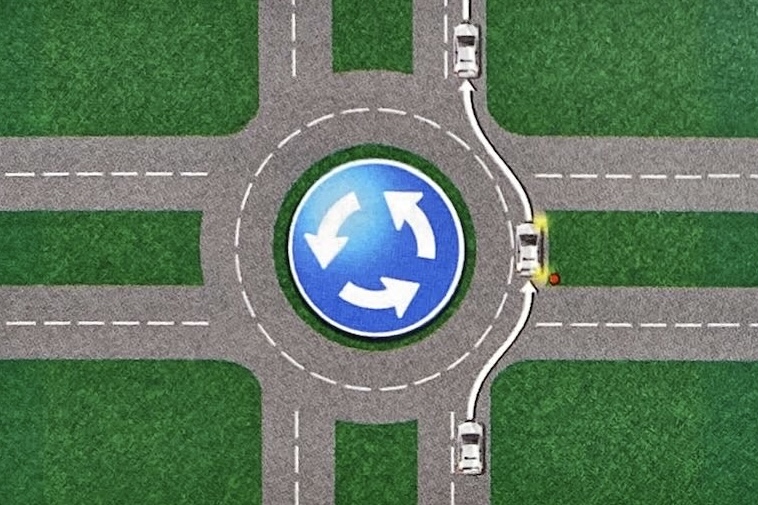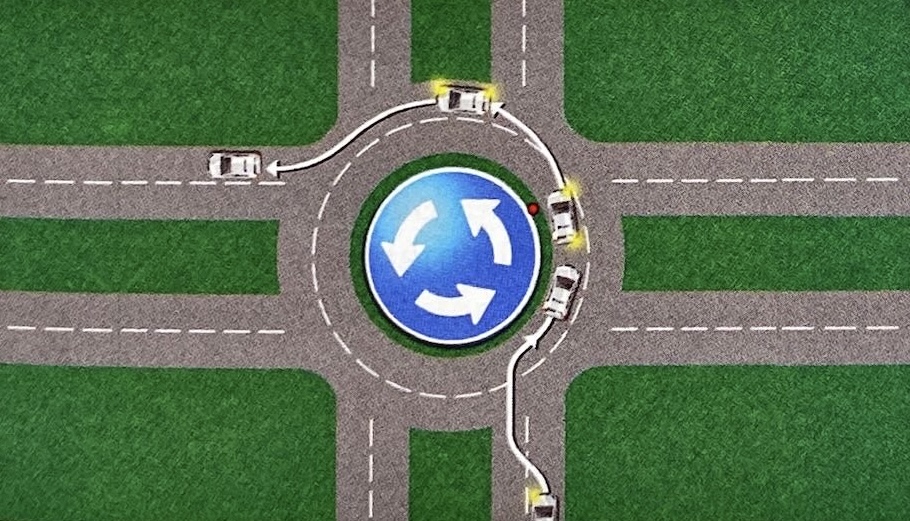Special road, only one driving direction, overtaking is allowed on both left and right. 👀
Roundabouts are safer than intersections and allow for a fast flow of traffic. Thus they are found quite often in the road.
Turning right on a roundabout
One-way road that runs around a central island. The sign D1 denotes a roundabout (located in the island.) Traffic drives to the right onto the roundabout.
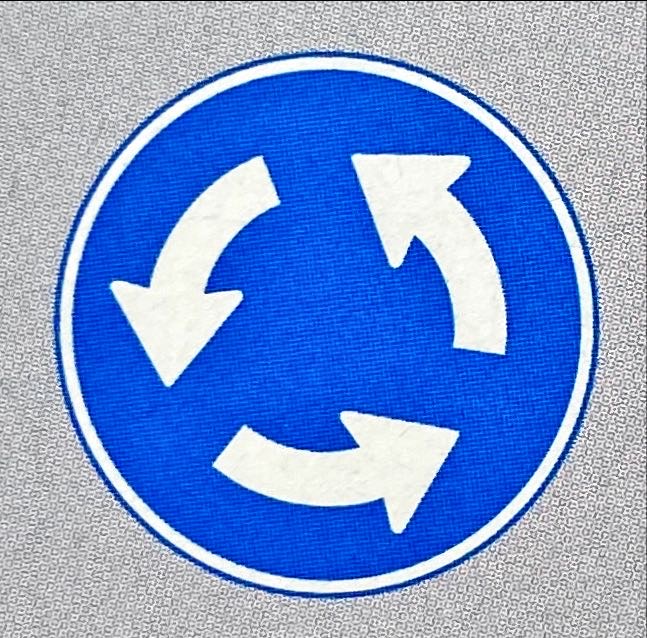
Approaching the roundabout
Sign J9 signals a coming roundabout. A roundabout can consist of a single lane (mini roundabout), and also two or more.
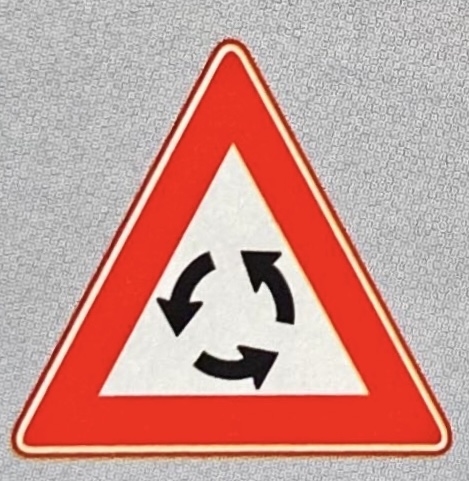
Pre-sorting
At roundabouts with two or more lanes, traffic signs and arrows on the road indicate the different directions of travel. When approaching the roundabout, check which exit you need to take and rive in the correct lane.
The arrows on the road indicate how to sort ahead.
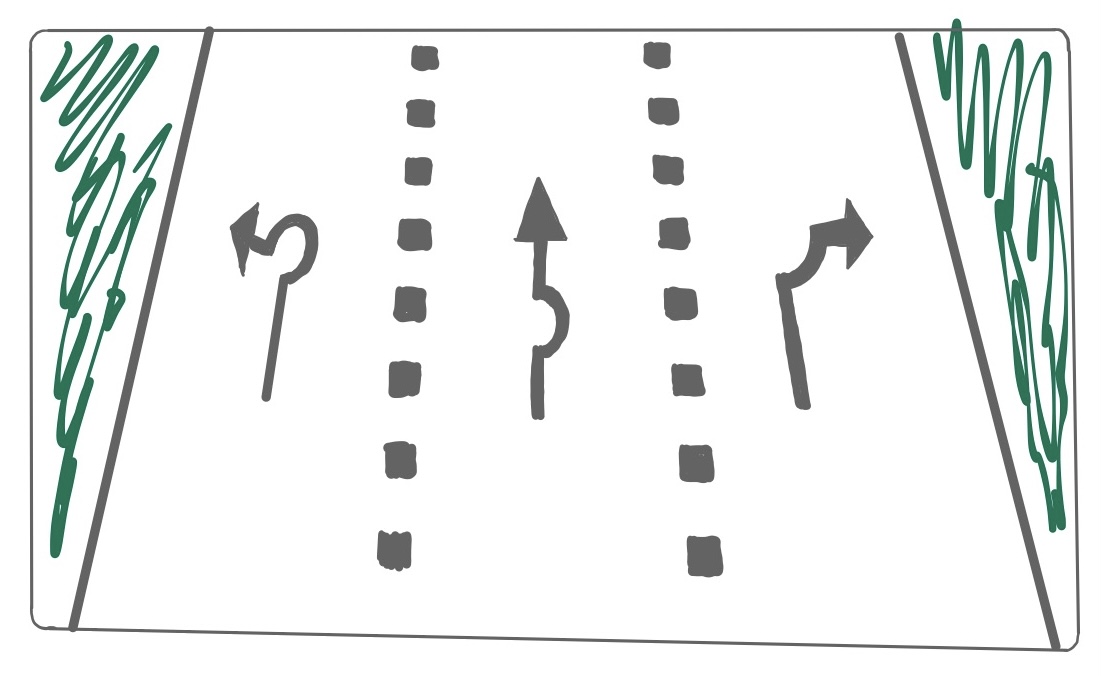
Indicate direction
Before you enter the roundabout, you can let other traffic participants know which exit you are going to take:
- 1st exit: when approaching the roundabout, give direction to the right.
- 2nd exit: do not indicate when approaching the roundabout.
- 3rd and 4th exit: when approaching the roundabout , indicate left.
As soon as you want to leave the roundabout (ie. after passing the previous exit), indicate your direction to the to the right.
Speed
By slowing down before the roundabout, you have more time to observe the traffic situation on the roundabout . Also maintain a speed of 20 to 30 km per hour on the roundabout itself (this may be slightly higher at larger roundabouts).
Viewing behavior just before the roundabout
As you approach the roundabout, scan the situation around and on the roundabout:
- What type of roundabout is it (number of lanes, which traffic signs, priority situation)?
- Are there other road users on or near the roundabout?
- Can cyclists and mopeds approach from the right? *
- What is the situation like now? Is it a clear roundabout, is there anything special?
In the meantime, keep an eye on the traffic behind you via your interior and exterior mirrors.
Just before the roundabout, look forward and to the left to see if you can enter the roundabout. As you enter the roundabout, look forward and to the left again and in your mirrors at the traffic behind you.
* Cyclists can enter a roundabout from two directions. Therefore, before you enter the roundabout always check left and right to see if the road is clear. ⚠️
If the cycle path is included in the roundabout, it is part of the road and you must give way to cyclists and mopeds going straight ahead.
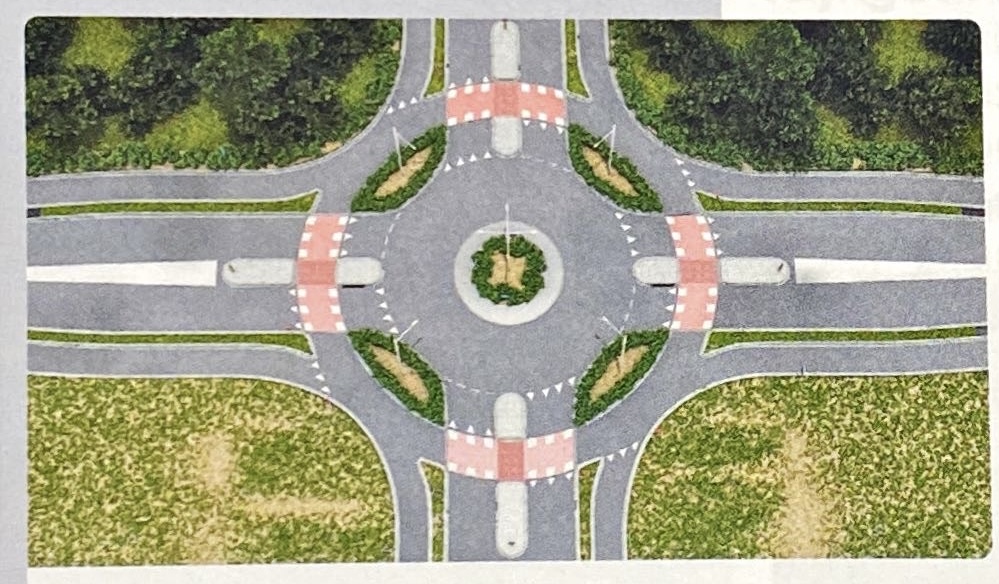
Here the cycle path is separate from the roundabout. Cyclists and mopeds must let you go first.
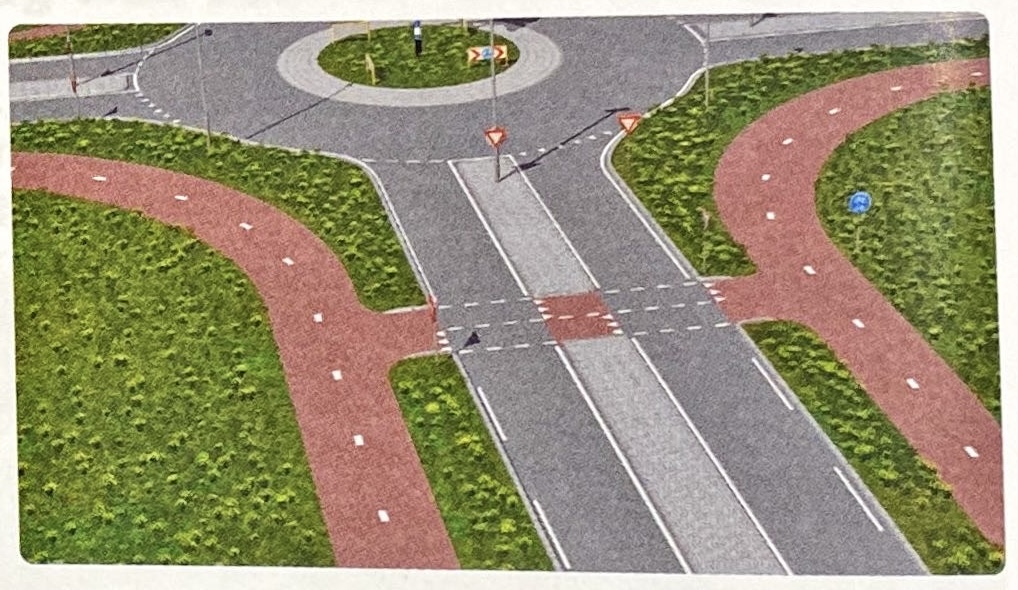
Priority
At a roundabout without traffic signs or signals, traffic from the right has priority. This type of roundabout is rarely encountered in practice, almost all roundabouts in the Netherlands are priority roundabouts. The following applies: traffic on the roundabout has priority (because they come from the right).
Sign B6 and shark teeth on the road make it clear that drivers have priority at the roundabout.
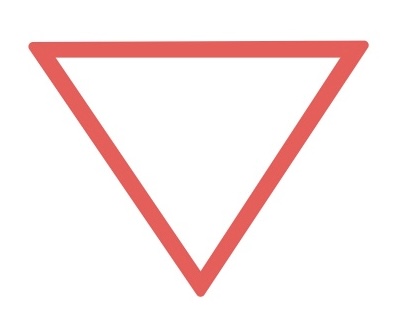
At larger roundabouts, traffic is also controlled using traffic lights. 🚦
At the roundabout
Once at the roundabout, follow the route towards your exit. On a single-lane roundabout this is quite simple. On a roundabout with two or more lanes, you will have to deal with traffic in front of you, behind you and next to you.
Overtaking
⚠️ The normal rule ‘keep to the right as much as possible’ does not apply on a roundabout.
Just before and on a roundabout you are allowed to:
- Drive left and right;
- Overtake other drivers on the left and right.
Of course you are not allowed to hinder others.
Changing lanes
If you want to change lanes at a roundabout, first check whether the road is clear.
| Switching to the right lane | Switching to the left lane |
|---|---|
| Rear-view mirror | Rear-view mirror |
| Left exterior mirror | Right exterior mirror |
| Over your left shoulder | Over your right shoulder |
Leaving the roundabout
Leaving the roundabout works the same as turning right:
- Look in your interior mirror, forwards, in your right exterior mirror and over your right shoulder to see if the road is clear.
- Indicate direction to the right.
- Sort to the right.
- Check whether you should give way to straight-traffic traffic on the roundabout.
- Take a short right turn.
Should you give way to straight-traffic traffic or not?
When turning, the following normally applies: straight-traffic (ie. traffic on the same road) has priority. In the case of a roundabout, this rule does not always apply. ⚠️
Roundabout with 4 exits illustrated
Below, you can see the ideal driving line and the moment to signal your turn for each exit
- Quarter around
- Half around
- Three quarters around
- All the way around
